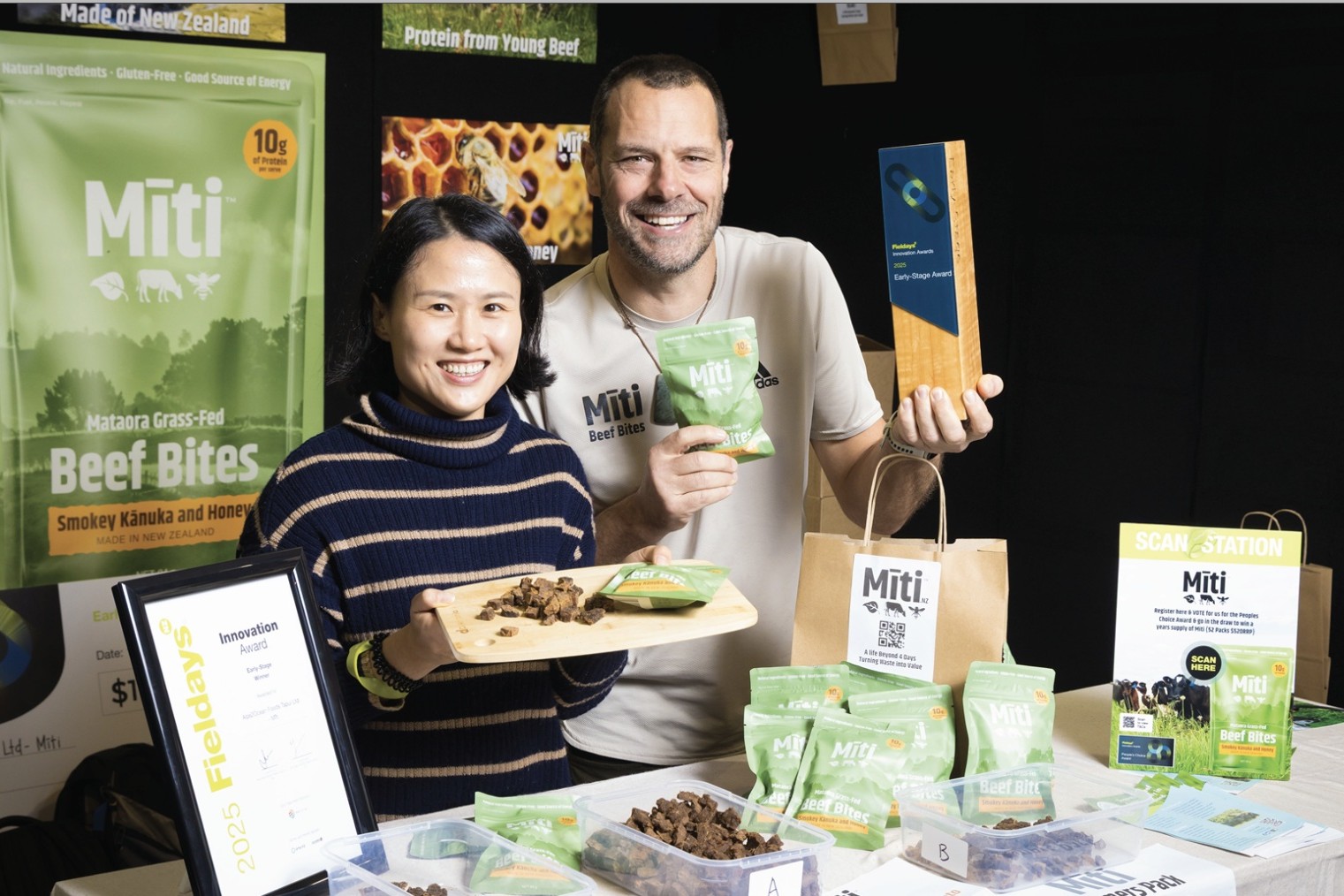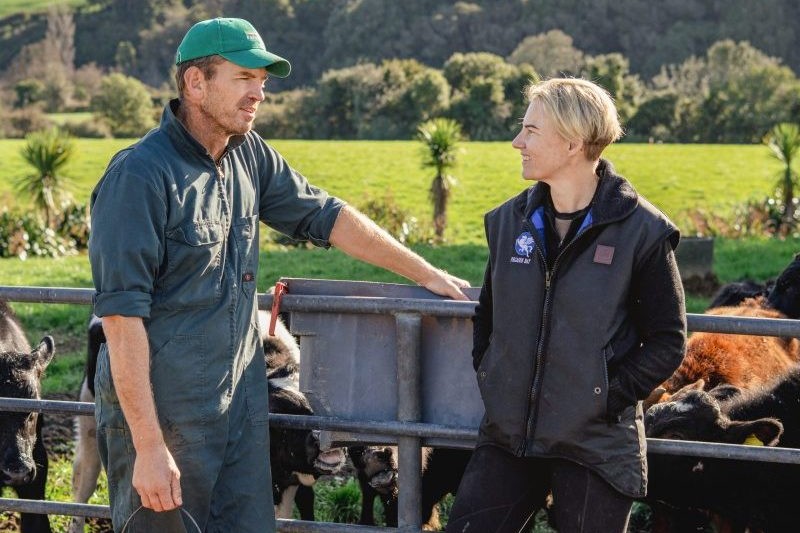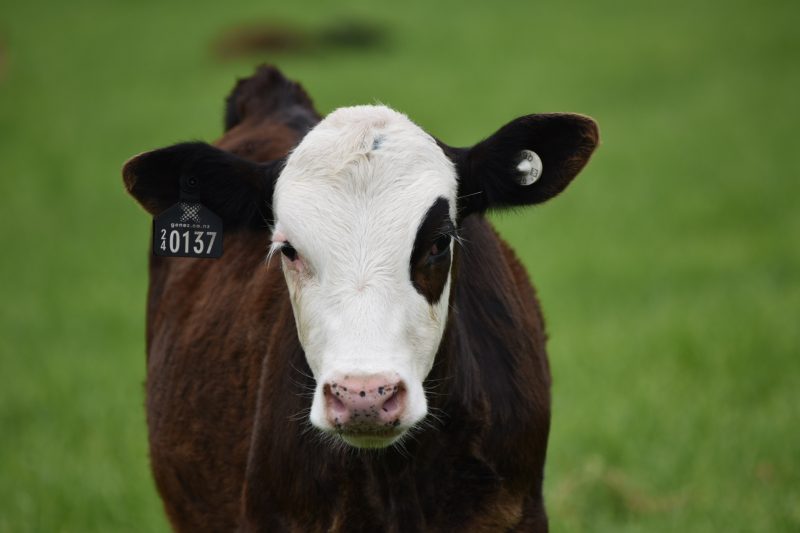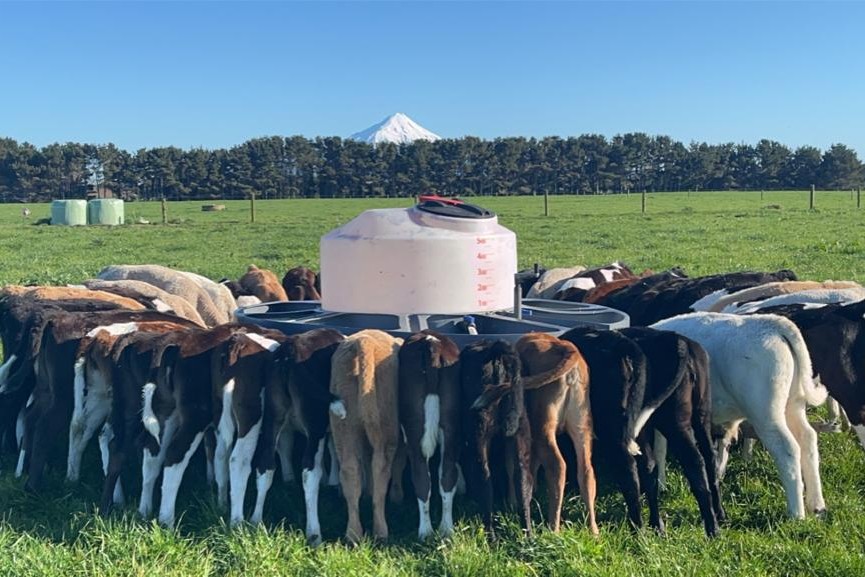Awaking the sleepy beef-on-dairy giant
Pāmu’s beef-on-dairy strategy is maturing from concept to large-scale operational reality, with the state-owned enterprise on track for its aspirational target of rearing all non-replacement dairy calves by 2030. Words Kara Tait.
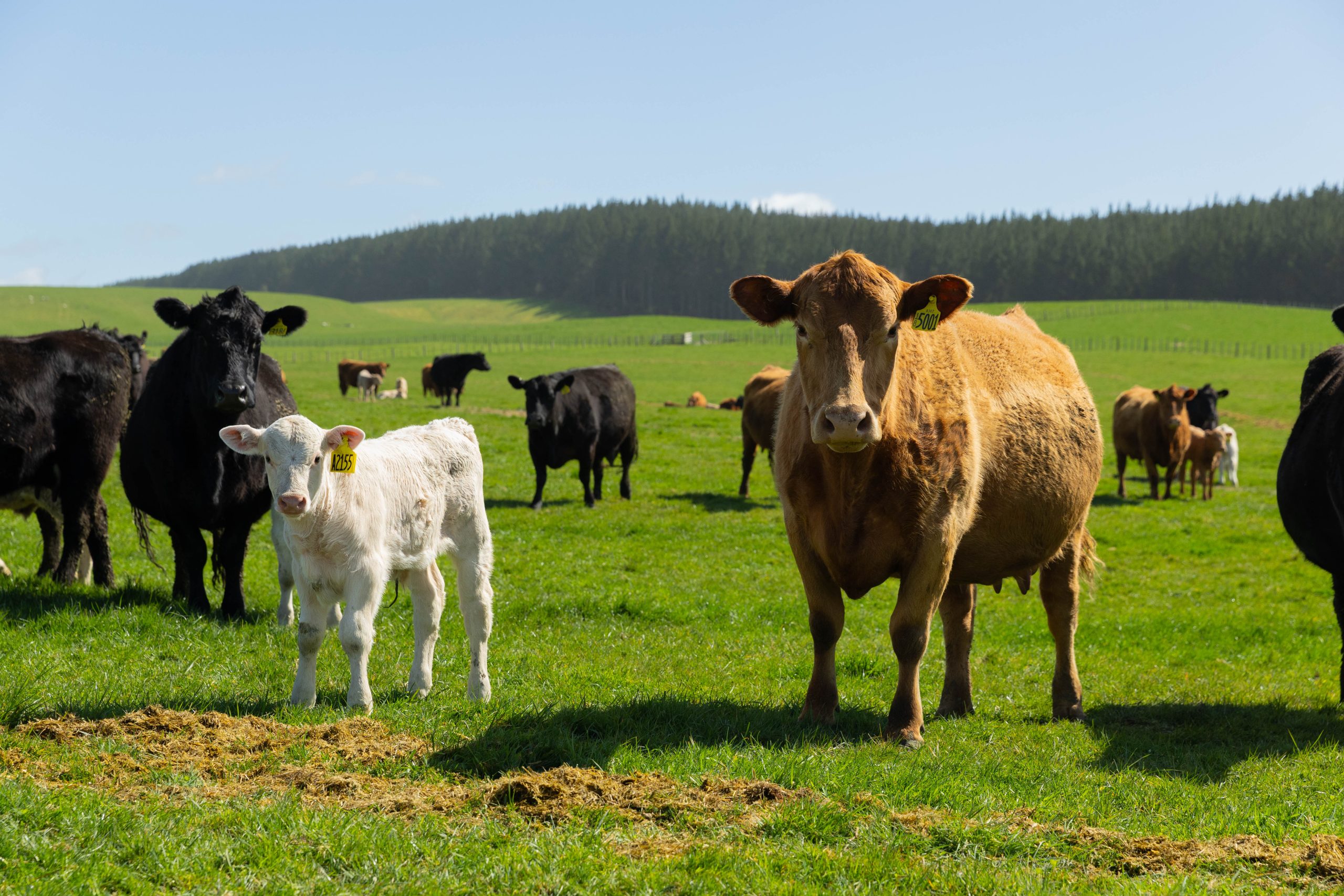
What began as a multiyear ambition is an evolving farm systems shift for Pāmu (Landcorp Farming Limited), New Zealand’s largest farmer. As it shifts away from bobby calves, the company is focused on the opportunities, from how calves are raised from day one, through to animal welfare, genetics, integrating the dairy and livestock business through trade animals, emissions reduction, financial performance, and market opportunities.
“Aotearoa New Zealand has always embraced an element of beef-on-dairy however, it is a sleeping giant of an opportunity to integrate our pastoral-based sectors into a common value proposition to feed a hungry world for our pasture-based protein,” says Pāmu Chief Operating Officer Will Burrett.
“We have common challenges around farm gate productivity declining, fixed costs increasing, desire to improve feed conversion efficiency, stranded stainless steel for processing and markets demanding greater volume from our nutritional profile and product provenance,” he says.
As well as consumer demand, beef-on-dairy has other advantages to both the dairy and beef industries:
- We can create a stock class with the best attributes of different breeds, apt for both prime cuts and lean manufacturing beef
- Favourable GHG emissions intensity beef per kilogram of carcase weight
- Less than two-winter heifer finishing systems provide a lighter stock class for hill country and heavier soil types
- Optimisation of beef breeding and trade cattle policies across farms and regions
- Opportunity for a grass-fed beef supply programme from genetics right through to the customer
- Jobs in the regions, calf-rearing industry and the utilisation of existing assets.
Since formalising the strategy in 2023, Pāmu has lifted the proportion of non-replacement dairy calves reared from a baseline of 49% in FY23 to 56% in FY24.
The organisation targeted 61% by the end of FY25 and is set to exceed that target. From here, the goal is steady year-on-year improvements, to reach 85% in FY28 and 100% utilisation of calves by FY31.
“This isn’t the death of the traditional breeds – technology and beef-on-dairy expansion merely complement the breeding or maternal arm of the business with the trade arm.” – Will Burrett, Pāmu Chief Operating Officer
Collaboration with LIC
Pāmu Farms of New Zealand and Livestock Improvement Corporation (LIC) announced in December 2024 an innovative collaboration aimed at transforming the beef-on-dairy sector. Both organisations, together with Pāmu subsidiary, Focus Genetics, have begun working together on a new beef breeding programme that utilises genetics from Pāmu and Focus Genetics and will leverage LIC’s commercial capabilities with the aim of meeting the future demand for quality beef-on-dairy genetics.
The beef-on-dairy breed has been developed with key factors including short gestation, ease of calving, good growth rates, and excellent eating quality, as well as lower methane. The beef-on-dairy breeding animals will continue to be tested the entire way through the beef value chain from calf rearing to processing, ensuring the right genetics for performance, profitability and sustainability are as thoroughly evaluated as possible.
Behind the genetics lies a growing network of rearing and finishing operations. Exeter Farm, in the central North Island, has become a hub of beef-on-dairy activity, rearing over 3,800 calves annually in both spring and autumn batches. The farm operates as a closed, biosecure unit with strict protocols and clear targets for weight gain, animal health, and weaning age. Alongside Exeter, Pāmu is expanding finishing capacity across other regions, including converting unutilised woolsheds to calf-rearing operations on the South Island’s West Coast, enabling it to rear and finish beef-on-dairy calves almost entirely self-sufficiently.
Leaning on technology
Two key success factors of the programme have been the incorporation of wearables and the use of farm system modelling and forecasting through FARMAX. Wearables to aid management at scale to get the right semen, in the right animal at the right time; as well as supporting the finishing of the animals as fast as possible through geo-fencing, improving paddock subdivision, ultimately improving pasture utilisation and quality by 15–25%.
“The potential for 100ha blocks converted into 30-day rotations or the additional 20–30kg weaning weights of once-bred beef-on-dairy heifers versus traditional beef weaner weights, are exciting for the next generation of farmers to incorporate within their land-use optimisation and ultimately, access to capital,” Burrett says.
“This isn’t the death of the traditional breeds – technology and beef-on-dairy expansion merely complement the breeding or maternal arm of the business with the trade arm. What breeds you use are ultimately farmer preference; however, I challenge the pastoral sector to think laterally around the benefit of targeted beef genetics and technology (geo-fencing and farm management software) to enable further productivity, in the same vein as soil health and pasture species/genetics – our core pastoral principles.
“Through disciplined monthly physical and financial reviews, we are identifying risk and opportunity earlier within our livestock forecasting. This means we can aggregate regional models to optimise pasture use
and feed demand. The process has highlighted opportunities for increased stocking capacity, which has in turn meant we have increased productivity across the business in FY25.
“Every farmer can continuously improve pasture growth and utilisation,” says Burrett. “Our opportunity to drive 10–20% greater productivity means not only the farmers win behind the farm gate. Processors also win with fixed cost recoveries through holding, if not growing, volumes relative to the reality of continual land-use change.”
Financial outcomes
Pāmu has several key performance indicators within rearing and finishing systems, critical to drive productivity and economic return. Metrics such as average calf entry date (closer to mid-August the better), and days to weaning (targeting under 100 days), cost per calf reared (fully costed to include labour below $400/calf) and a payback period of five years for investment in greenfield calf-rearing sites (e.g. Exeter shed) and one to four years less for retrofit sites, depending on capital works required (e.g. Weka shed).
Additional rearers within the market
Gross margin analysis continues to underwrite decision making, however, nine times out of ten, moving animals within the business means Pāmu captures more value within a ‘One Pāmu’ approach.
The drive to rear all viable calves internally also supports the company’s broader financial strategy. Beef-on-dairy performance is one of the four key performance indicators that is part of the company’s sustainability-linked loan agreements.
These instruments tie lending rates to the achievement of specific environmental, social, and governance targets, placing measurable progress at the heart of commercial operations. As the utilisation rate climbs, so too does the ability of Pāmu to align capital costs with sustainable outcomes.
The environmental benefits of beef-on-dairy integration are increasingly well understood. Independent modelling by AgResearch has shown that calves raised in efficient, fast-finishing beef-on-dairy systems can generate up to 48% lower greenhouse gas emissions per kilogram of finished liveweight compared to traditional beef systems. For Pāmu, this emission-efficient beef enterprise is an important component of its climate response strategy which includes both emissions reduction and adaptation.
The beef-on-dairy strategy demonstrates that sustainability and commercial performance can work together. The programme has already reduced reliance on external calf purchases, down by an estimated 7,000 head per year (reduction of $7m–8m in working capital buying on the open market vs rearing ourselves). Pāmu has begun to unlock a more self-sufficient livestock system that is resilient, reduces working capital, and is increasingly valuable.
Progress has also been enabled by strong cross-sector collaboration. Pāmu continues to work closely with LIC, Beef + Lamb New Zealand, AgResearch, and commercial beef processors to ensure that data, genetics, and market expectations are aligned. Long-term progeny testing, led through the Dairy Beef Progeny Test, has provided the foundation for bull selection decisions and carcase performance tracking. Pāmu also engages directly with processors and brand partners to support traceable, low-emissions beef supply chains, ensuring that what begins as a calf on a dairy platform ends as a high-quality red meat product in domestic and export markets.
With each season, the strategy moves closer to normalising the idea that every healthy, non-replacement calf has a role and value in the wider business. That shift in mindset, from waste to worth, marks one of the most significant cultural changes in New Zealand pastoral farming over the past decade.
While it is a transformation still in progress, Pāmu is open and transparent about its progress and challenges, with the aim of sharing lessons and experiences with the wider agricultural sector. The company holds open days annually and has presented its experiences at events around the motu. While the results to date are promising, Pāmu acknowledges that the final stretch of the journey – rearing the last 20% of calves – will be the most complex. These calves often fall outside of optimal weight and seasonality windows, requiring more nuanced rearing systems, winter feed planning, and tighter coordination across business units. Yet the company remains confident that continued investment in systems, genetics, and supply chain partnerships will deliver the capabilities needed to complete the transition.


